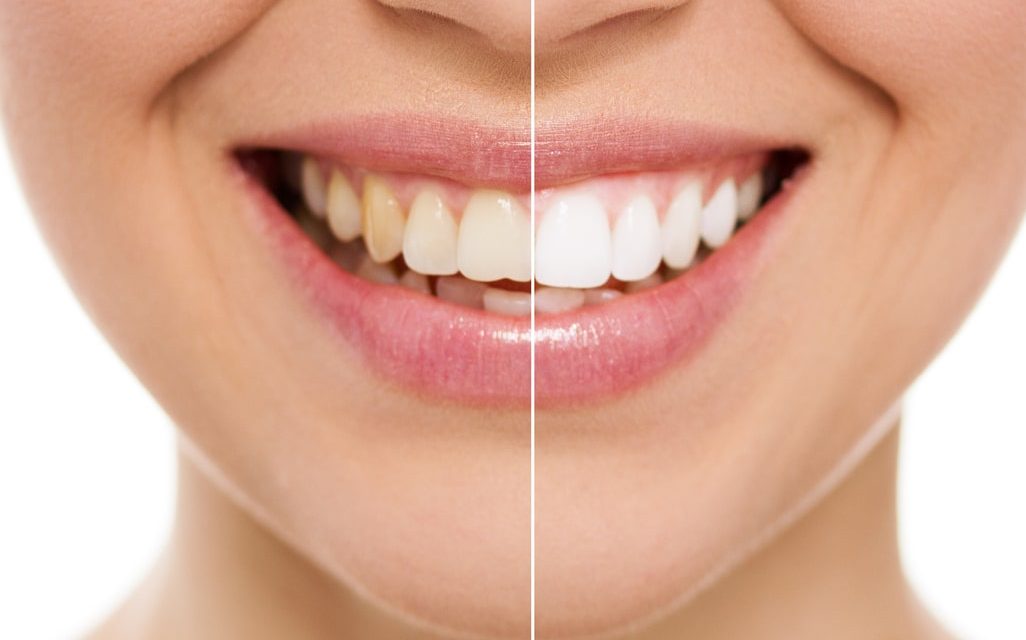Our teeth are like sponges. They contain pores and absorb anything that you put into your mouth, including those with colour. Things like coffee, tea, wine, dark berries and cigarettes are agents that especially stain teeth. Over time, due to those stains, your teeth become darker. Most surface stains can be removed with regular cleaning but deeper stains that have accumulated over time might be a little more challenging.
Fortunately, most deep stains can be fixed with professional teeth whitening. But does teeth whitening work the same for everyone? Let’s explore some facts about teeth whitening and the type of teeth whitening options available in Singapore.
What you should know about teeth whitening
1. The key to teeth whitening success is the delivery method
Most teeth whitening products use similar active ingredients. The difference then is the concentration of ingredients and the way the treatment is administered. For instance, an active ingredient in dental whitening is hydrogen peroxide. For teeth whitening to work, hydrogen peroxide levels must be at least above 5%. Most dentists would use about 30% hydrogen peroxide as they are trained to do so safely without damaging your gums in the process.
If you opt for a take-home whitening kit from the dentist, make sure that the tray is custom-fitted to every angle of your tooth, regardless of whether you have crooked teeth or not. This is to eliminate any chance of inconsistency.
2. Instant but short lived vs gradual but long lived
In a bit, I will explain the two main types of dental whitening options, but the gist of it is you can choose between in-office laser whitening or a custom-fitted take-home whitening kit. Essentially, both work using the same gel, except the whitening process for the first option is accelerated with a special laser. Patients can see immediate results albeit only temporary. This lightness is maintained either with a whitening kit (second option) or regular dental visits.
The second option will take a longer time as the process is gradual, but the results will be pretty consistent as long as you put in the effort.

3. Not everyone’s teeth can be perfectly white
Behind your stains, the natural colour of your teeth is determined by your genetics. This true colour is set at birth. What a whitening product does is to remove the accumulated stains and bring back your teeth to their original colour as much as possible. So if you’re not genetically blessed with pearly whites, you might want to manage your expectations. The degree of whitening is also dependent on the nature of your stains — teeth with blue or grey discolourations from antibiotics typically do not respond as well to teeth whitening products. In such cases, your dentist might recommend veneers or crowns instead. The same goes for badly stained teeth.
4. Teeth whitening only works on natural teeth
When artificial caps like veneers and crowns are installed, they are usually created to match the colour of your surrounding teeth. The colour of artificial caps will never change even with whitening work. If the discrepancy between your natural whitened teeth and restoration is too big, you may request for the restoration to be replaced to blend in with your teeth.
5. Teeth whitening does not damage teeth
Teeth whitening will only damage teeth if done too aggressively, just like how brushing your teeth too hard can be damaging. When done by a responsible and skilled dentist, teeth whitening is extremely safe.
Types of dental whitening
I will now quickly run through the two types of teeth whitening options I offer:
In-office whitening
- Routine scaling and polishing is first performed to maximise contact between your teeth and the whitening gel
- The whitening gel is applied, which is then “activated” by a laser
- Your lips and gums will be protected with rubber seals I prepare beforehand
- You may experience some teeth sensitivity
- Results are visible instantly
- Done at my clinic, takes about an hour
- More expensive
Take-home whitening kits
- A mould of your teeth is taken during the first visit to create custom-fitted trays
- During the second visit, you will receive the the trays and syringes of bleaching gels
- The trays and bleaching gels are to be used everyday for 2-4 weeks straight. Duration depends on the extent of your stains
- This process can be continued as long as you want to maintain the whiteness of your teeth
- Results are gradual
- Less expensive
Which is better for me?
Ultimately, it boils down to your preference and budget. How soon do you want to see results? Are you disciplined enough to see through with results?
If you have sensitive teeth, it might be better to opt for take-home whitening kits for your teeth to acclimatise to the gel. The in-office procedure might be too much for those with very sensitive teeth. Keeping in mind your dentist’s advice to avoid staining foods, practice good oral hygiene and to go for regular dental visits will play a huge role in your teeth whitening success.
References
- Auschill, T. M., Hellwig, E., Schmidale, S., Sculean, A., & Arweiler, N. B. (2005). Efficacy, side-effects and patients’ acceptance of different bleaching techniques (OTC, in-office, at-home). Operative dentistry, 30(2), 156–163.
- White, D. J., Kozak, K. M., Zoladz, J. R., Duschner, H. J., & Götz, H. (2000). Effects of tooth-whitening gels on enamel and dentin ultrastructure–a confocal laser scanning microscopy pilot study. Compendium of continuing education in dentistry. (Jamesburg, N.J. : 1995). Supplement, (29), S29–S43.


